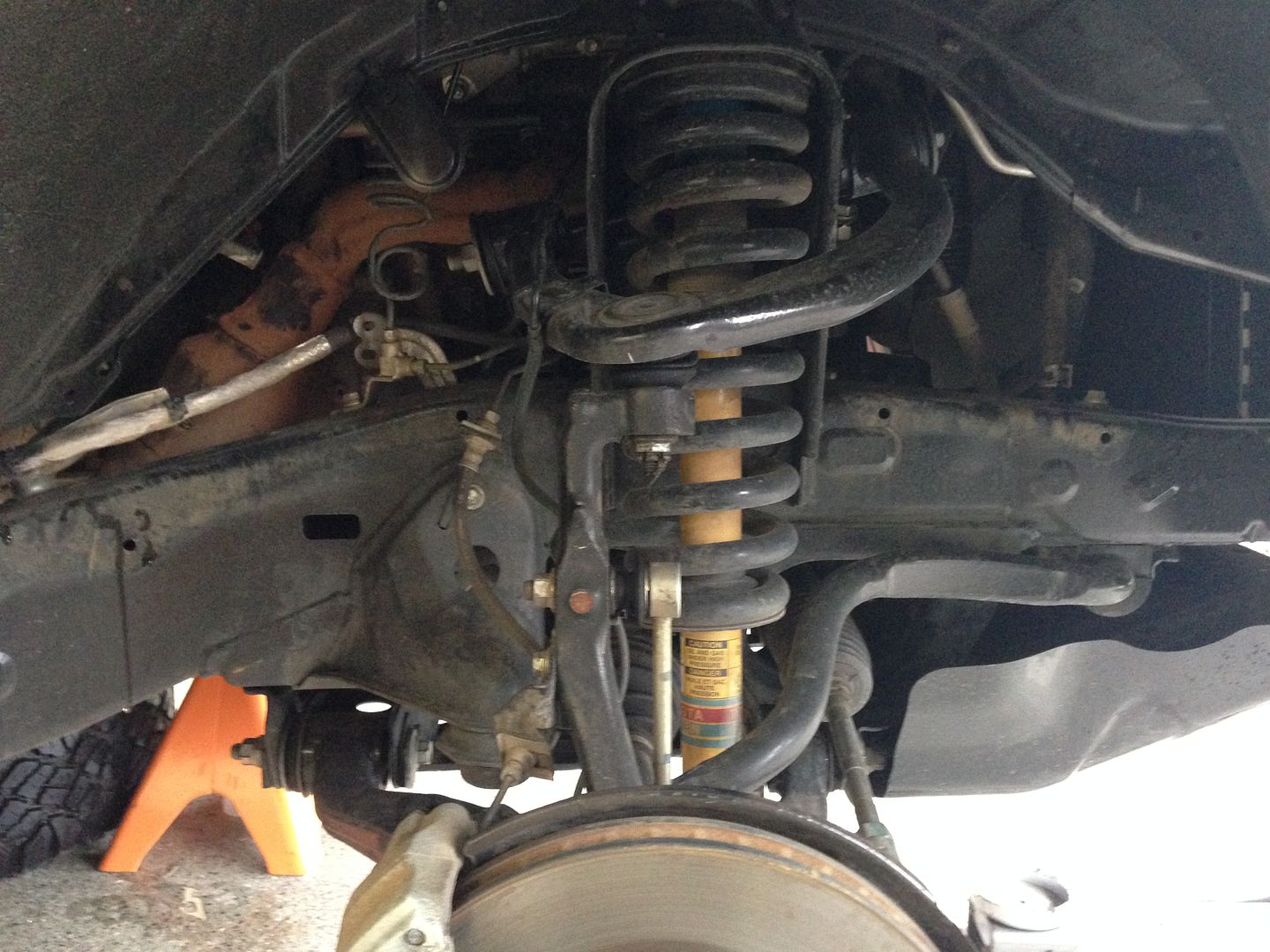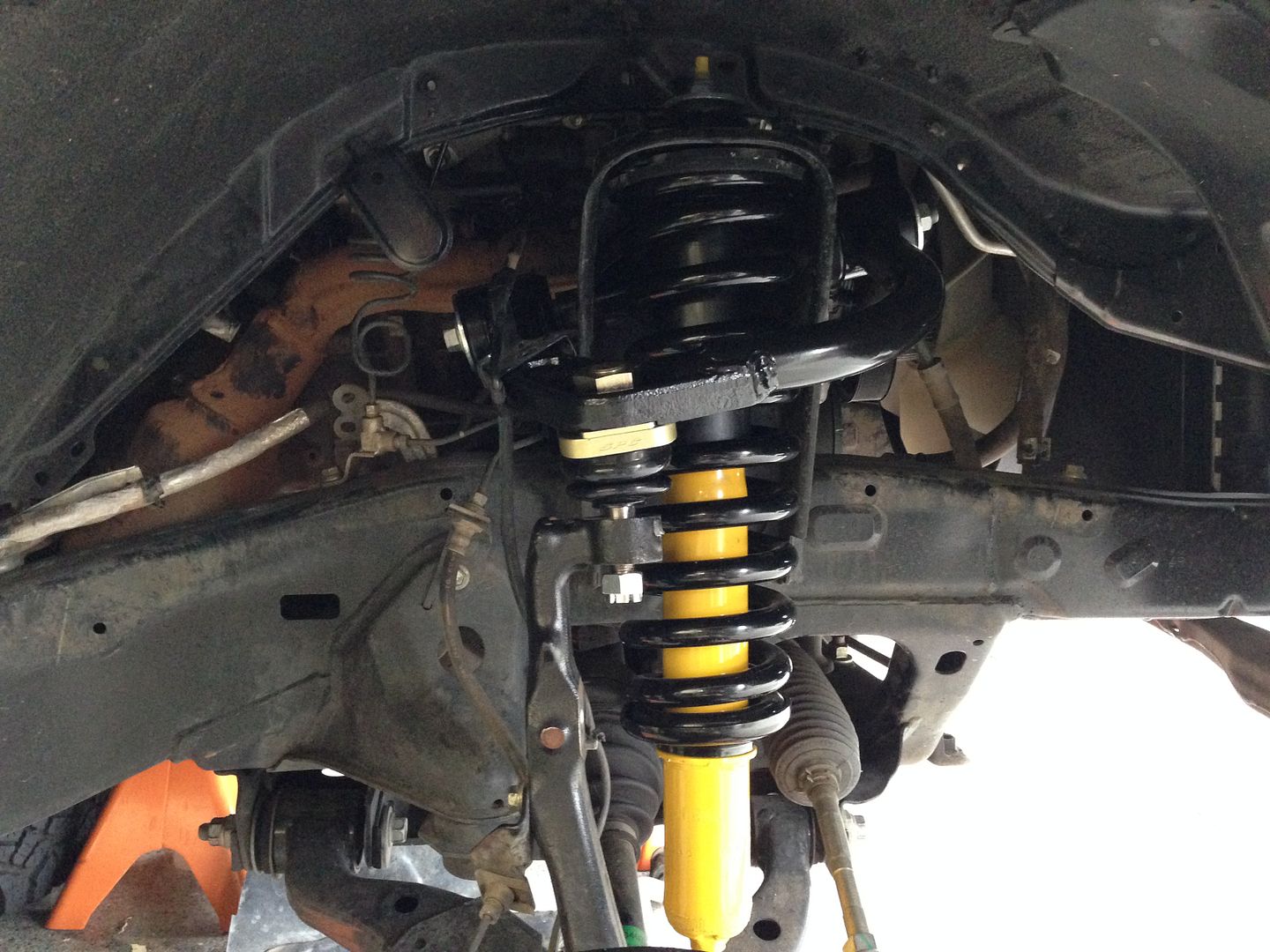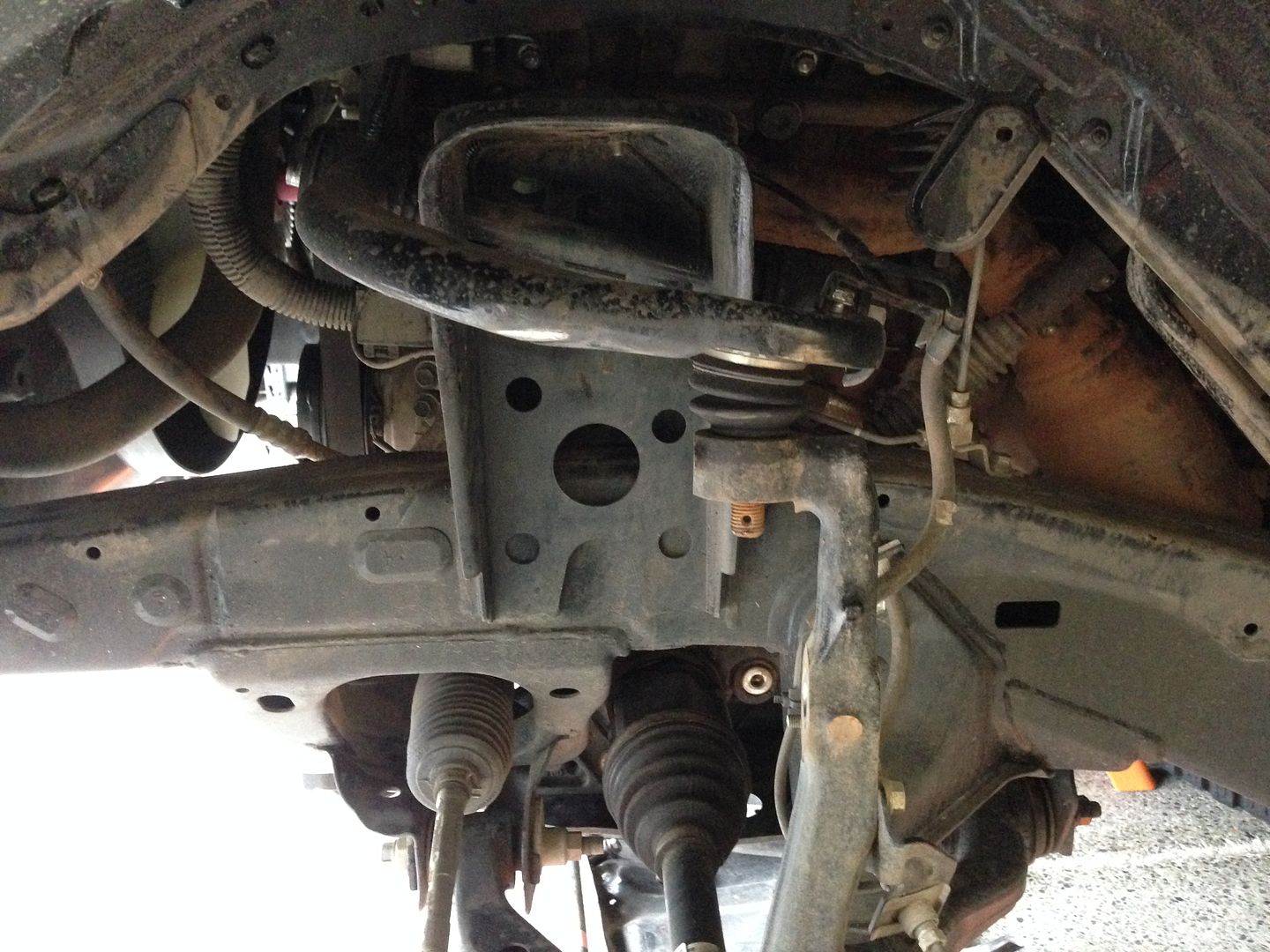You are using an out of date browser. It may not display this or other websites correctly.
You should upgrade or use an alternative browser.
You should upgrade or use an alternative browser.
Overland Suspension
- Thread starter Dr. Cornwallis
- Start date
NCtrail4R
Adventurer
Keep in mind that adding a lift without changing suspension members (altering suspension geometry) or limiting travel won't change tire clearance. Adding taller coils simply moves the truck up in the travel. The bump stops still set the overall travel limit so if a tire rubs at full compression with stock springs/shocks, then it will still rub with lift springs/shocks. It may not rub as often by raising the truck, but it will still rub when the wheel is in the same travel positions.
I think I understand this. By increasing the stiffness of the coil springs or by increasing their length you are lowering the point in the wheel's range of travel that it comes to rest: This effectively raises the truck. You will thus decrease the amount the wheel can drop from this at-rest position and increase the amount it can rise.(the distance that the spring can compress) So it will require more force to push the wheel up to the point in its travel where the tire rubs but it will still rub in exactly the same place it did before the lift if there is enough force.Keep in mind that adding a lift without changing suspension members (altering suspension geometry) or limiting travel won't change tire clearance. Adding taller coils simply moves the truck up in the travel. The bump stops still set the overall travel limit so if a tire rubs at full compression with stock springs/shocks, then it will still rub with lift springs/shocks. It may not rub as often by raising the truck, but it will still rub when the wheel is in the same travel positions.
So, depending on where the tire is rubbing, wouldn't a body lift be more effective in increasing clearance around the tire? The body lift wouldn't help if the tire is rubbing on the upper control arm but it could help if the tire is rubbing inside the fender well.
Getting back to my question in my original post about replacing the UCA; do some manufacturers of after-market UCAs build them in such a way that they are out of the way of the larger tire?
Thanks to all of you for answering my questions and helping me to understand this.
Last edited:
bknudtsen
Expedition Leader
I think I understand this. By increasing the stiffness of the coil springs or by increasing their length you are lowering the point in the wheel's range of travel that it comes to rest: This effectively raises the truck. You will thus decrease the amount the wheel can drop from this at-rest position and increase the amount it can rise.(the distance that the spring can compress) So it will require more force to push the wheel up to the point in its travel where the tire rubs but it will still rub in exactly the same place it did before the lift if there is enough force.
So, depending on where the tire is rubbing, wouldn't a body lift be more effective in increasing clearance around the tire? The body lift wouldn't help if the tire is rubbing on the upper control arm but it could help if the tire is rubbing inside the fender well.
Getting back to my question in my original post about replacing the UCA; do some manufacturers of after-market UCAs build them in such a way that they are out of the way of the larger tire?
Thanks to all of you for answering my questions and helping me to understand this.
You are on the right track. So, when the longer coil pushes the LCA down, it in turn pulls the UCA down as well via the spindle. This tips the tire out at the top. With a stock UCA, the only way to get the camber back is to adjust the LCA's out at the bottom. Caster is adjusted the same way, but being that the stock UCA is fixed, there is insufficient adjustment left to get proper camber/caster relationship. With the stock UCA tipped down, and the accompanying new larger tires, you now get rubbing on the UCA and binding in the upper ball joint during travel. (I had rubbing on the UCA with stock suspension and 265/75-16 on OEM rims)
Aftermarket UCA's tend to be shorter to make up for negative camber, upper ball joint positioned rearward for added caster, as well as having better articulating upper ball joints to gain back that lost down travel. Light Racing UCA's, have adjustability built in so you can do the majority of the alignment with the UCA and fine tune it with the LCA.


On the other hand, body lifts will most certainly get you additional clearance between body and chassis, but you do not gain any additional suspension travel, as you are still using OEM components. For most, this is probably adequate. The problem with body lifts is the change in relationship between body and chassis usually creates fitment issues with certain components like bumpers, shift linkage, radiator, etc, as well as, added stress on the body mounts. You do not gain any additional load carrying capacity or dampening with just the body lift. This is why you see most folks add a suspension lift with some type of trimming of the wheel wells and cab mounts. (Best of both worlds.)
Last edited:
Let me know if I got this right:
The longer springs will push the LCA down and in. (towards the center of the truck) This causes the top of the tire to lean out. To bring the tire back to vertical the LCAs have to be adjusted out. This, in turn, pushes the tire into the UCA causing it to rub. Thus the need for a shorter UCA. (along with regaining the lost down travel.)
So the suspension lift itself (if not accompanied by modified UCAs) will actually worsen the tendency of larger tires to rub the UCAs at full compression? For an overland truck where the goal is to be able to run somewhat larger tires, say 255/85 R16, one might be able to do the necessary trimming to wheel wells and cab mounts without adding any lift at all?
I guess that the other factor we haven't discussed is the offset of the wheels. After reading your post I did a lot of looking through the archives of various forums to help me in my education. Your experience with tire rub on the UCAs with 265/75 R16 tires seems to be at odds with a couple other post I saw which say that this size tire causes no rubbing. Were you using stock alloy wheels or stock steel wheels? They do have different offsets and widths don't they?
Many thanks.
The longer springs will push the LCA down and in. (towards the center of the truck) This causes the top of the tire to lean out. To bring the tire back to vertical the LCAs have to be adjusted out. This, in turn, pushes the tire into the UCA causing it to rub. Thus the need for a shorter UCA. (along with regaining the lost down travel.)
So the suspension lift itself (if not accompanied by modified UCAs) will actually worsen the tendency of larger tires to rub the UCAs at full compression? For an overland truck where the goal is to be able to run somewhat larger tires, say 255/85 R16, one might be able to do the necessary trimming to wheel wells and cab mounts without adding any lift at all?
I guess that the other factor we haven't discussed is the offset of the wheels. After reading your post I did a lot of looking through the archives of various forums to help me in my education. Your experience with tire rub on the UCAs with 265/75 R16 tires seems to be at odds with a couple other post I saw which say that this size tire causes no rubbing. Were you using stock alloy wheels or stock steel wheels? They do have different offsets and widths don't they?
Many thanks.
bknudtsen
Expedition Leader
The rubbing I had was only evidenced by the paint being worn off the UCA at the ball joint. Stock alloy wheels. Now, that being said, I am the second owner, so in the previous 6000 miles prior to my ownership. someone could have put on larger tires, and those could have caused the rub. However, there wasn't much room between the inside of the tire and the UCA with the stock alloys.

The reason that I swapped out the OEM alloys for FJ Cruiser Trail Teams is because they have less positive offset, but not so much that I had to worry about the outside edge of the tires rubbing the fenders. I think that with some trimming and proper offset wheels, you could run larger tires without a lift. At some point though, you will be rubbing at full compression or at full steering lock.

The reason that I swapped out the OEM alloys for FJ Cruiser Trail Teams is because they have less positive offset, but not so much that I had to worry about the outside edge of the tires rubbing the fenders. I think that with some trimming and proper offset wheels, you could run larger tires without a lift. At some point though, you will be rubbing at full compression or at full steering lock.
Last edited:
